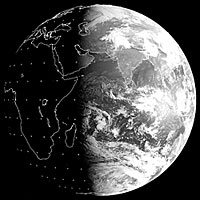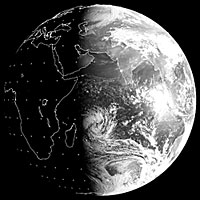 On 18-19 March, a weather front moving east from Iran dumped a lot of rain on the Afghan desert. The cloudburst brought death and all-around misery in the south and western regions of a country that was already reeling from excessive winter snow.
On 18-19 March, a weather front moving east from Iran dumped a lot of rain on the Afghan desert. The cloudburst brought death and all-around misery in the south and western regions of a country that was already reeling from excessive winter snow.
Two hundred died in the raging waters last week in the normally arid terrain. Mud houses were easily washed away and thousands were left homeless. But this latest Afghan tragedy did not make an impact in the collective Southasian psyche. Newspaper readers and television viewers from Colombo to Amritsar did not feel for those whose lives were devastated in the far northwest.
A combination of media globalisation and national centralisation is what keeps us from empathising with individuals and communities in other parts of our region. While western media multinationals package news designed for viewers in another hemisphere, the development of capital-centric national media in our countries promote an insular audience.
Sure, distances are vast in the subcontinent. But if economic history had evolved differently, the fact of the drowning of 200 Afghan children, women and men would have been treated as real news. Restrictions on cross-border travel (and the evolution of bubble economies that can only interact with each other through the good offices of smugglers) has left us with empathy only for one's own citizenry.
 This separation of national turfs and solidification of boundaries has led to compartmentalised grief. We are to mourn only for those who are ours. When a ferry capsizes on the Padma in Bangladesh downriver on the Ganga, the tragedy is Bangladeshi. Column inches in the Calcutta press will be marginally more than in the New Delhi papers.
This separation of national turfs and solidification of boundaries has led to compartmentalised grief. We are to mourn only for those who are ours. When a ferry capsizes on the Padma in Bangladesh downriver on the Ganga, the tragedy is Bangladeshi. Column inches in the Calcutta press will be marginally more than in the New Delhi papers.
Bangladeshi ferries 'always' capsize in storms that whip up in the delta and Afghanistan is in any case a basket case of tragedies. The 'value' of death even for Southasian editors and newscasters is enhanced when bus passengers are targeted in Tel Aviv or people perish to mudslides in California and earthquakes in Japan.
The most awesome display of media myopia was during the 'shock and awe' American campaign in Iraq, when we Southasians watched the display of US military pyrotechnics. Dazzled by the rain of smart bombs, the flying tracers and the massive incendiary explosions in downtown Baghdad, we were made to forget the innocents left dying in the rubble.
On 21 March, CNN and BBC beamed down blanket coverage of a school shooting which killed nine in Minnesota. The same day: 36 were killed by tornadoes in northern Bangladesh; in Balochistan 12 people died in a flash-flood and 10 in an accident in Hyderabad, Sindh; and nine people died in the Nepal insurgency.
 The hemispheric bias is built into the system of the BBCs and CNNs of the world but it also equally applies to the news editors of television channels in all-powerful New Delhi who forget that the satellite footprint encompasses the rest of the region beyond Bharat. And so, all satellite channel viewers from Imphal to Quetta are made to suffer through New Delhi's filters which hover around events inside the Ring Road and political news from Maharashtra, Gujarat, Uttar Pradesh, Kashmir and related Pakistan news obviously deemed important. The rest of India is not invisible in the newscasts either.
The hemispheric bias is built into the system of the BBCs and CNNs of the world but it also equally applies to the news editors of television channels in all-powerful New Delhi who forget that the satellite footprint encompasses the rest of the region beyond Bharat. And so, all satellite channel viewers from Imphal to Quetta are made to suffer through New Delhi's filters which hover around events inside the Ring Road and political news from Maharashtra, Gujarat, Uttar Pradesh, Kashmir and related Pakistan news obviously deemed important. The rest of India is not invisible in the newscasts either.
Petitions to imperious forces in the media capitals will hardly change things. The ultimate redress will only come through decentralised media networks: through a vibrant vernacular press, local FM radio and television. When there is adequate coverage of local events locally, the inadequacy of international coverage will automatically be moot.
While waiting for decentralised media to develop, we must at least try to create sensitivity within Southasia to affairs in each other's countries. One way to begin would simply be for satellite television viewers to pay more attention to regional weather reports. When, for example, there is a nasty cloud front approaching Afghanistan in mid-winter, let's use our imagination to feel the deep freeze in the high desert. In the upcoming monsoon, when the weather map shows heavy rains in the central Himalaya, think landslides. Once we begin to empathise with the weather in a different part of Southasia, we can take the editors and newscasters along with us.



